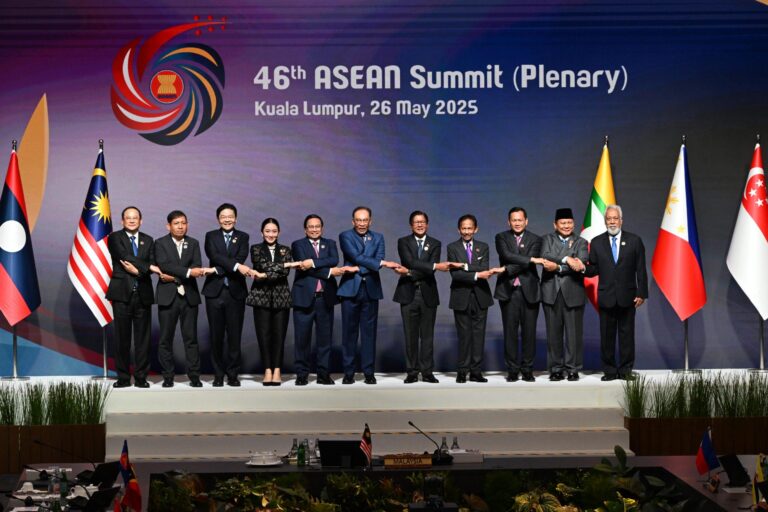In a significant move aimed at strengthening economic ties in the Asia-Pacific region, the United States has finalized trade agreements with four Southeast Asian nations during the recently concluded ASEAN summit. These pacts, announced amid intensified global trade dynamics, mark a strategic effort by the U.S. to deepen partnerships and enhance market access within the fast-growing ASEAN bloc. The agreements are expected to boost bilateral trade, foster investment, and support regional economic integration, underscoring the evolving geopolitical and commercial landscape in Southeast Asia.
ASEAN Summit Sees Landmark Trade Deals Between USA and Southeast Asian Nations
The recent summit marked a significant breakthrough as the United States inked trade agreements with four key Southeast Asian nations, aiming to strengthen economic ties and promote sustainable growth across the region. These deals focus on enhancing market access, fostering innovation, and supporting small and medium-sized enterprises (SMEs), while addressing evolving global trade challenges. Key sectors benefiting from these agreements include technology, agriculture, and renewable energy, reflecting a shared commitment to resilient and future-ready economies.
Highlights of the agreements include:
- Tariff reductions on key export commodities.
- Joint initiatives to boost digital trade and cybersecurity.
- Measures to facilitate cross-border investments with simplified regulations.
- Collaborations on environmental standards promoting clean energy.
| Country | Trade Volume Increase % | Focus Sector | Projected Job Creation |
|---|---|---|---|
| Vietnam | 12% | Technology | 15,000 |
| Indonesia | 9% | Agriculture | 20,000 |
| Thailand | 10% | Renewable Energy | 12,000 |
| Philippines | 11% | Digital Services | 18,000 |
In-Depth Analysis of Economic Impacts on Regional Markets and Supply Chains
The recent trade agreements between the USA and four Southeast Asian nations mark a pivotal shift in the economic landscape of the region. Analysts anticipate significant changes in regional markets as the enhanced trade relations promise to reduce tariffs, streamline regulatory processes, and increase foreign direct investment. Key sectors such as electronics, agriculture, and manufacturing are expected to experience heightened activity, which will bolster export volumes and amplify supply chain integration. This realignment not only stimulates local economies but also positions Southeast Asia as a more attractive hub for global trade flows.
Supply chains will undergo strategic reconfiguration to leverage the new trade terms, with businesses focusing on:
- Diversification: Reducing dependence on single-source suppliers to mitigate risks associated with geopolitical tensions.
- Efficiency Enhancements: Adopting advanced technologies and logistics optimization to comply with new standards and reduce costs.
- Collaborative Partnerships: Strengthening regional ties to create more resilient and flexible production networks.
| Country | Projected GDP Growth (%) | Key Export Sector | Trade Volume Increase |
|---|---|---|---|
| Vietnam | 6.8 | Electronics | +15% |
| Indonesia | 5.3 | Agriculture | +12% |
| Thailand | 4.7 | Automotive | +10% |
| Philippines | 5.1 | Textiles | +13% |
Strategic Recommendations for Strengthening US-ASEAN Trade Partnerships Moving Forward
To amplify the momentum gained from recent trade agreements, the United States should prioritize enhancing digital infrastructure and e-commerce frameworks across ASEAN nations. Facilitating seamless online trade will unlock significant market potential, particularly for SMEs striving to expand regionally. Additionally, fostering collaborative innovation hubs focused on technology and sustainable development can serve as catalysts for deeper economic integration and shared prosperity.
Equally important is the commitment to harmonizing regulatory standards to reduce non-tariff barriers. This includes:
- Streamlining customs procedures and adopting unified certification systems.
- Promoting transparent intellectual property protections.
- Encouraging joint ventures in green energy and supply chain resilience.
| Strategic Focus | Key Actions | Expected Outcome |
|---|---|---|
| Digital Integration | Develop e-commerce platforms | Boost SME market access |
| Regulatory Alignment | Standardize customs procedures | Smooth cross-border trade |
| Innovation Partnerships | Create regional tech hubs | Drive sustainable growth |
Final Thoughts
As the ASEAN summit draws to a close, the United States’ successful conclusion of trade agreements with four key Southeast Asian nations marks a significant step in strengthening economic ties within the region. These deals underscore Washington’s commitment to deepening partnerships in Southeast Asia amid shifting global trade dynamics. Stakeholders will now watch closely as the agreements move toward implementation and assess their impact on regional trade and investment flows in the coming months.




